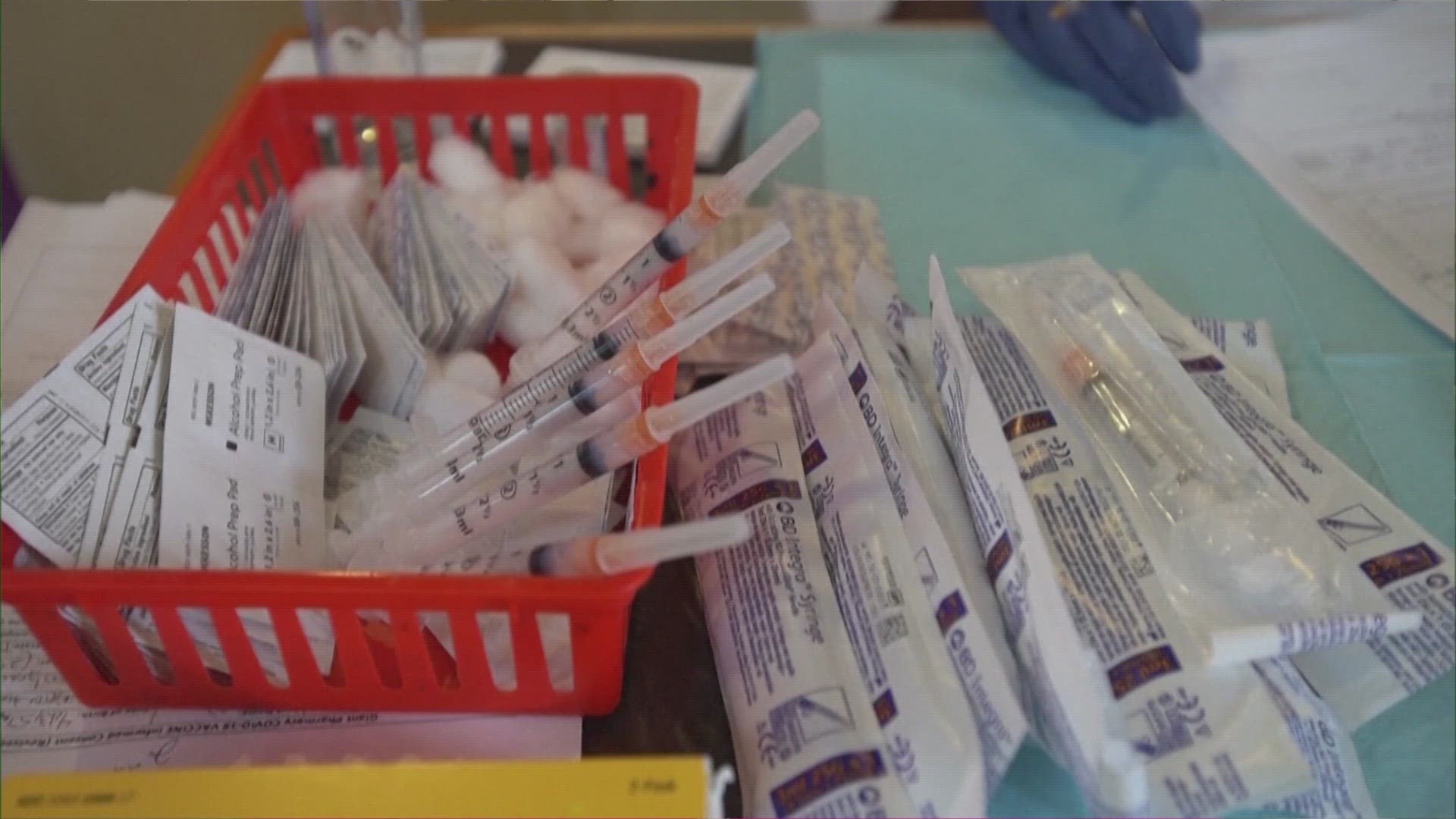After a midsummer surge of COVID-19 cases pushed some Texas hospitals to the brink, the state’s coronavirus numbers improved in August, with statewide hospitalizations falling to their lowest point in two months.
Public health experts say they are encouraged by the trend but fear the state may see another surge as more schools and universities across Texas begin reopening for the fall.
“People might think we're out of the woods,” said Catherine Troisi, an infectious disease epidemiologist at UTHealth School of Public Health in Houston. “And then it doesn't take much for the number of cases to start going up again.”
Statewide, cases reached a peak in late July, when some South Texas hospitals reported being “full to the gills” as statewide hospitalizations for coronavirus patients neared 11,000 each day. Since then, the figure has fallen to a daily average of almost 4,500 hospitalized patients during the week ending Aug. 31.
The last time Texas coronavirus hospitalizations were this low was in late June. But they still remain high compared to the early days of the pandemic. For example, statewide hospitalizations were around 1,700 during the first week of May, when Gov. Greg Abbott began the first phase of allowing businesses to reopen after announcing statewide shutdown orders in March.
Texas later saw COVID-19 cases soar in June and July. On June 26, the governor ordered bars to close down again and reduced restaurant capacity to 50%, saying that allowing bars to reopen had been a mistake.
Experts have said that subsequent interventions such as Abbott’s statewide mask mandate, issued July 2, helped to reduce the rate of viral transmission in Texas in late summer. But as more students come into close contact with each other, epidemiologists expect a new surge in coronavirus infections, similar to what has happened in other countries such as Israel.
Some Texas schools have begun in-person instruction, while many others are waiting to reopen after Labor Day or later in the fall. Some that have reopened reported staff members and students arrived with COVID-19 or caught it in athletic practice.
It’s unclear how many coronavirus infections have occurred in grade schools so far, but starting Sept. 8, Texas education officials will require all school districts to fill out forms weekly to report new cases, including whether the infections occurred on or off campus and whether the campus closed as a result.
Universities also have reported new coronavirus cases as students return. At the University of Texas at Austin, The Daily Texan, a student newspaper, reported on Tuesday two new cases in on-campus dormitories and four more in an off-campus dorm. And Baylor University this week asked students in one residence hall to stay in their rooms for four days after 21 students in the building tested positive.
Already, some public health experts say they are beginning to see signs in the data that Texas’ progress in containing the virus may be slowing.
Dr. Peter Hotez, dean of the National School of Tropical Medicine at Baylor College of Medicine, said Monday he was watching Houston-area coronavirus numbers for a possible resurgence.
“After a while of numbers trending downward with a long tail, then a plateau, now maybe starting to go back up?” Hotez wrote on Twitter.
An Abbott spokesman did not respond to emailed questions about school reopenings. On Monday, Abbott wrote on Twitter that Texas will not “have anymore lockdowns,” citing the decline in hospitalizations after his July mask order. He also said he may “provide updates next week about next steps.”
More than 12,000 Texans have died from the coronavirus under the state’s official tally, with Hispanic and Black Texans dying at disproportionately high rates.
And the state’s infection numbers are still alarmingly high compared to what they were this spring, said Rajesh Nandy, associate professor of biostatistics and epidemiology at the University of North Texas Health Science Center at Fort Worth.
“The good thing is that the trend is in the right direction,” he said. “So hopefully it will go down even further.”
The less viral transmission there is in the community, the safer it is to reopen schools and universities, but restrictions are still necessary, public health researchers say.
The state’s positivity rate would need to be 5% for 14 days to reduce the chance of a surge after Labor Day, and “we're nowhere near that,” Troisi said. In the week ending Aug. 31, about 12% of coronavirus tests were yielding positive results, according to the Texas Department of State Health Services.
School leaders must weigh the public health risks of reopening against the social and developmental harm of keeping kids out of school.
It can be difficult to convince people to strictly follow public health guidelines as the pandemic drags on, Nandy said.
“If the numbers are close to zero, then that means that we have more headroom to react,” he said. “What was really scary mid-July is that we were at close to full capacity at the hospitals, which meant that if the numbers kept growing, we would soon outrun the total hospital capacity.”
During the July peak, hospitals took extraordinary measures to keep up with tens of thousands of sick Texans. Hospital capacity in the Rio Grande Valley region was stretched particularly thin, with ambulances waiting hours to deliver patients to packed emergency rooms. In some cases, patients were flown hundreds of miles for care.
Today, the majority Hispanic region reports a still serious but less dire situation, with state data showing roughly 1,000 hospital beds available at the latest count.
“It really had been a hot spot for a while and has slowly cooled down,” said Dr. Jamil Madi, ICU medical director and chief of the critical care department at Valley Baptist Medical Center in Harlingen.
But the hospital is still running a makeshift ICU, which was expanded to handle an influx of severely ill COVID-19 patients.
“Admissions to the emergency room have gone down,” Madi said. “The issues that we have are the patients that have been in the hospital for weeks on end who are very sick.”
The hospital is preparing for the possibility of another surge as schools reopen in the fall.
“Is it a big possibility? We’re hoping not,” he said. “We don’t ever want to go back to where we were a month or so ago. It was devastating, mentally, psychologically, emotionally.”



